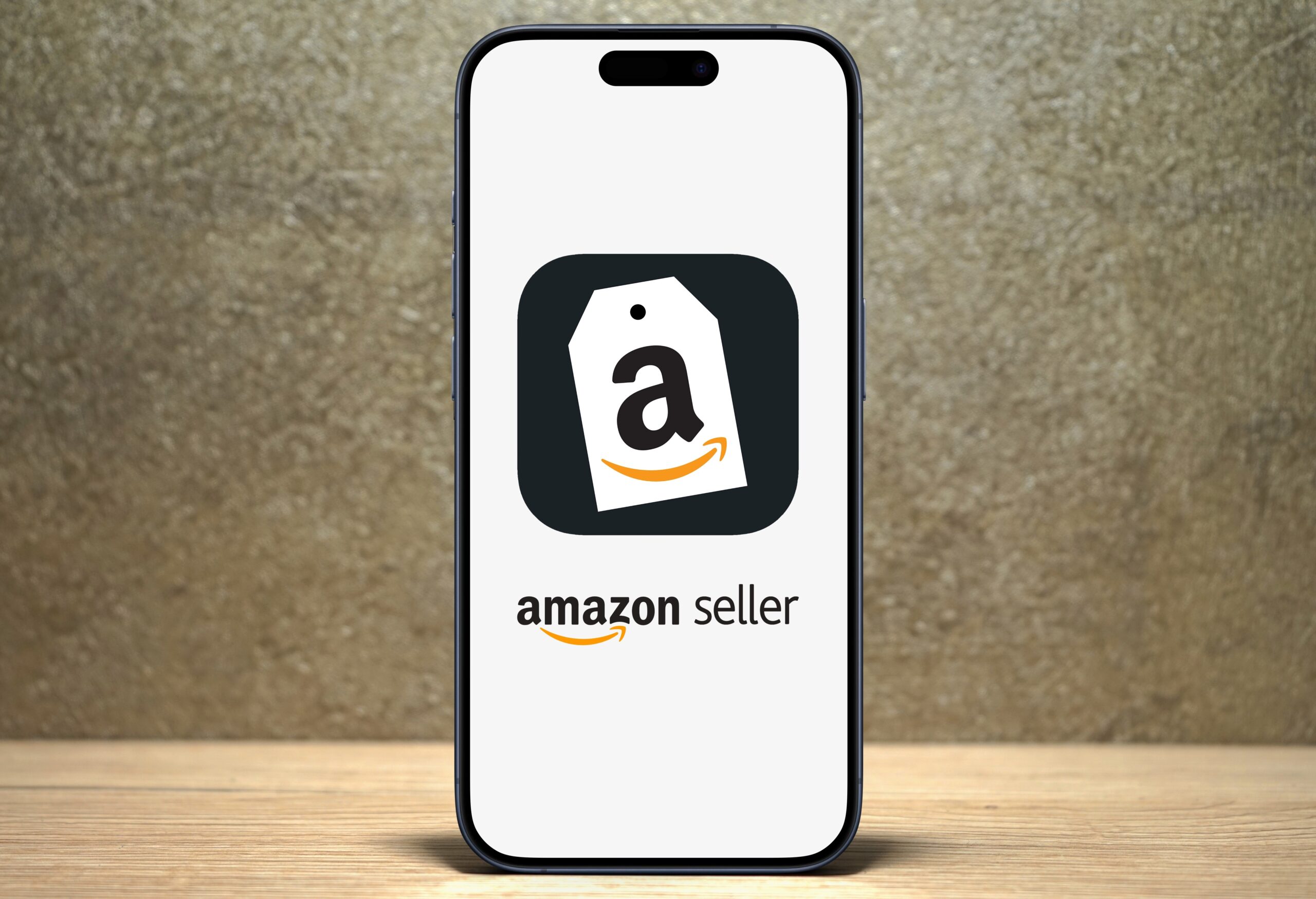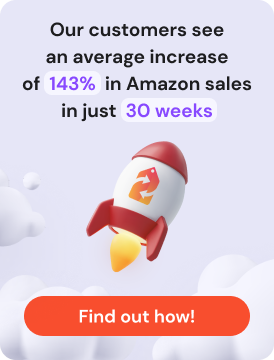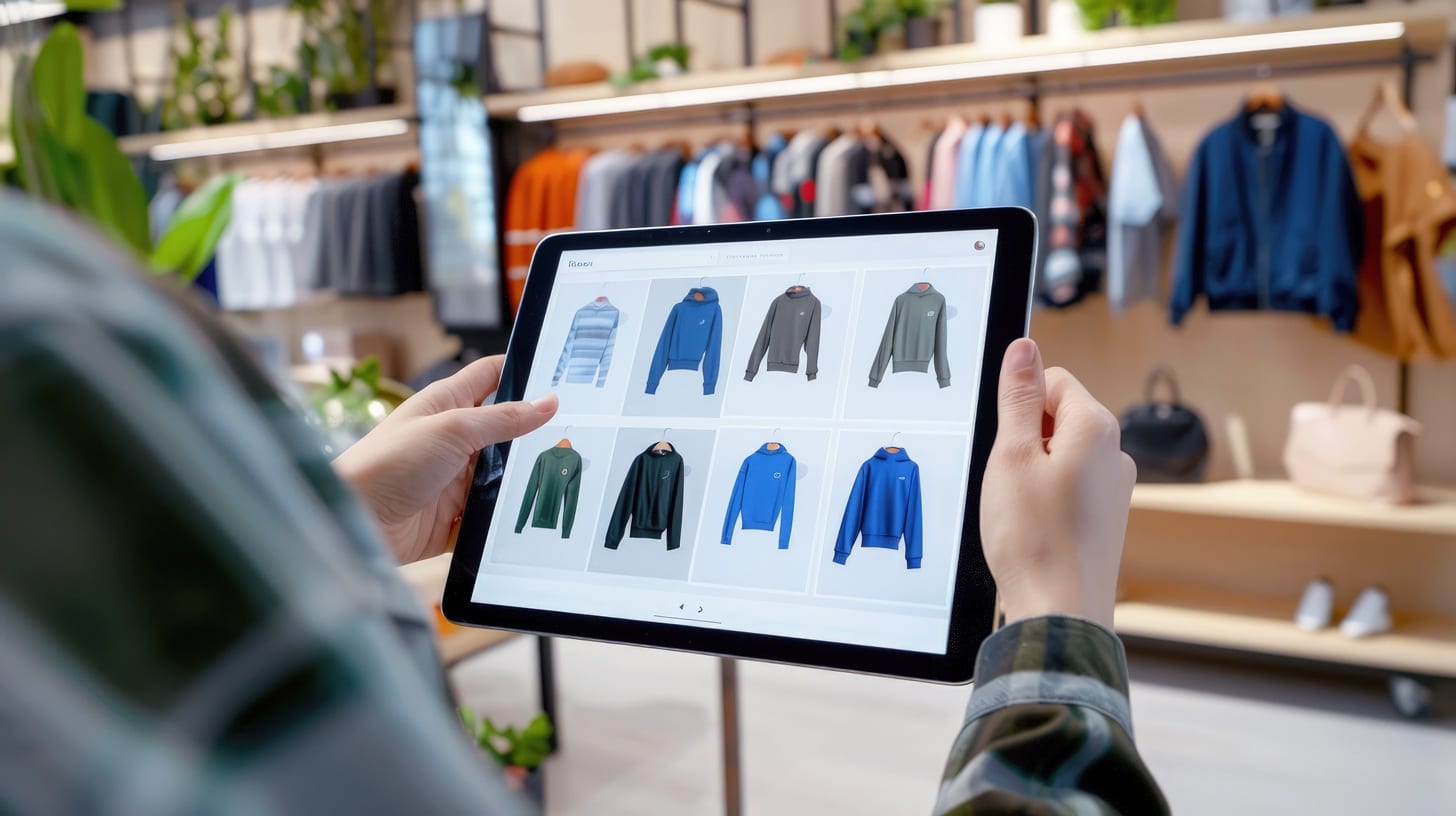Over 78% of top Amazon sellers rely on automated repricing tools to stay competitive and win the Buy Box. This guide explains how repricers work, why they’re essential for serious sellers, and how to choose the right one. Discover the key benefits of automation—and which tools outperform manual pricing strategies in today’s fast-moving eCommerce landscape.
The Pricing Race on Amazon: Why Every Second Counts
Amazon’s marketplace operates at lightning speed. With millions of sellers competing for the Buy Box—the golden ticket that drives 82% of Amazon sales—your pricing strategy can make or break your business. The challenge? Prices change every few minutes across thousands of products, and the Buy Box algorithm factors in dozens of variables beyond just price.
Manual repricing is no longer viable in this environment. By the time you adjust one product’s price, your competitors have already changed theirs multiple times. The data speaks for itself: 78% of Amazon’s highest-performing sellers now use automated repricing software to maintain their competitive edge and maximize Buy Box ownership.
The modern Amazon seller needs to respond to market changes instantly, 24 hours a day, 7 days a week. This is where repricing automation becomes not just helpful, but essential for serious business growth.
What Is an Amazon Repricer?
An Amazon repricer is automated software that monitors competitor pricing and adjusts your product prices in real-time based on predefined rules or artificial intelligence algorithms. Think of it as your personal pricing assistant that never sleeps, constantly analyzing the market and optimizing your prices to win more sales while protecting your profit margins.
Manual vs. Automated Repricing: The Critical Difference
Manual repricing involves logging into Seller Central, checking competitor prices, and manually updating your listings. For a catalog of even 100 products, this process can take hours daily—and by the time you’re done, the market has already shifted.
Automated repricing uses software that integrates with Amazon’s API to monitor competitors and adjust prices every 2-5 minutes. It operates continuously, responds to market changes instantly, and scales effortlessly whether you have 10 products or 10,000.
The efficiency gain is dramatic. What takes a seller hours to do manually, a repricer accomplishes in seconds—while you focus on sourcing inventory, optimizing listings, or growing your business in other ways.
Who Should Use an Amazon Repricer?
Repricing software benefits virtually every type of Amazon seller:
FBA (Fulfilled by Amazon) Sellers: Competing with other FBA sellers requires split-second pricing adjustments to capture the Buy Box. A repricer ensures you’re always competitively positioned without constant manual monitoring.
FBM (Fulfilled by Merchant) Sellers: Since FBM sellers often face perception challenges compared to FBA, strategic repricing helps overcome this disadvantage by offering compelling prices that win conversions despite longer shipping times.
Private Label Sellers: Even with unique products, private label brands compete within product categories. Repricing helps you find the sweet spot between maximum profit margins and competitive positioning against similar offerings.
Resellers and Arbitrage Sellers: These sellers face intense competition on identical products. Automated repricing is absolutely critical for staying competitive and winning the Buy Box consistently.
Why Automation Is Crucial for Winning the Buy Box
The Amazon Buy Box isn’t awarded based solely on having the lowest price. Amazon’s algorithm considers multiple factors including seller rating, fulfillment method, shipping speed, stock availability, and yes—competitive pricing. However, pricing remains one of the most dynamic and controllable factors in the equation.
Real-Time Responsiveness Drives Buy Box Success
Amazon’s Buy Box rotates among eligible sellers throughout the day. When your competitor drops their price by $0.25, they may capture the Buy Box—unless your repricer responds within minutes to match or beat their price strategically. This real-time responsiveness is impossible to achieve manually but essential for maximizing Buy Box ownership.
Research shows that sellers using automated repricing typically see their Buy Box win rate increase by 20-40% compared to manual repricing efforts. The difference translates directly to higher sales velocity and increased revenue.
Integration with Amazon’s Algorithmic Requirements
Amazon rewards sellers who maintain competitive prices consistently. The platform’s algorithm tracks your pricing history, and sellers who regularly offer competitive prices tend to win the Buy Box more frequently over time—even when they’re not the absolute lowest price at a given moment.
Automated repricers help build this positive pricing history by ensuring your prices remain continuously optimized. This algorithmic trust factor becomes a compounding advantage that manual sellers simply cannot replicate with sporadic price updates.
For more insights into winning the Amazon Buy Box, understanding these algorithmic factors is crucial for long-term success.
7 Key Benefits of Using an Amazon Repricer
1. Faster Buy Box Wins
The primary advantage of automated repricing is dramatically increased Buy Box ownership. By responding to competitor price changes within 2-5 minutes, repricers ensure you’re always in the running for the Buy Box. Sellers typically report 15-35% increases in Buy Box win rate within the first month of implementing repricing automation.
This isn’t just about lowering prices—it’s about intelligent positioning. A sophisticated repricer knows when to match competitors, when to undercut them by a penny, and when you can maintain a higher price because other factors (like your seller rating) give you an advantage.
2. Consistent Profit Margins
One common misconception is that repricing software creates a race to the bottom. Quality repricers actually protect your profitability through minimum price floors and intelligent pricing rules that prevent unprofitable sales.
You set hard limits—for example, never price below $15.00 or never accept less than 25% profit margin. The repricer operates within these boundaries, finding the optimal price that maximizes both competitiveness and profitability. This gives you the confidence to automate without fear of losing money on sales.
3. Massive Time Savings
Perhaps the most immediate benefit is recovering countless hours spent on manual price monitoring. Sellers with catalogs of 500+ products often spend 15-20 hours per week on pricing—time that could be invested in strategic growth activities.
With automation handling repricing, you can focus on high-value tasks like product research, supplier negotiations, advertising optimization, and customer service improvements. The time savings alone often justify the cost of repricing software within the first month.
4. Rule-Based or AI-Driven Strategies
Modern repricers offer two primary approaches to pricing strategy:
Rule-based repricing allows you to create specific instructions like «match the lowest FBA competitor price» or «stay $0.50 below the Buy Box price but never go below $20.» These rules give you precise control over how the software responds to market conditions.
AI-driven repricing uses machine learning to analyze historical performance data, sales velocity, competitor behavior patterns, and market trends to automatically optimize prices for your specific goals—whether maximizing profit, sales volume, or Buy Box percentage.
Many sellers start with rule-based strategies to maintain control, then experiment with AI features as they become comfortable with automation. The best platforms, like Repricer.com’s strategic repricing options, offer both approaches so you can choose what works best for your business model.
5. Inventory-Aware Pricing
Smart repricers integrate inventory management into pricing decisions. When stock is running low, you can automatically increase prices to slow sales velocity and maximize profit on remaining units. When inventory is abundant, you can become more aggressive on pricing to move products quickly and free up capital for new inventory.
This inventory-aware pricing prevents two costly scenarios: selling out too quickly at suboptimal prices, and carrying excess inventory that ties up your cash flow. The automation adjusts dynamically as your stock levels change throughout the day.
6. Comprehensive Competitor Tracking
Repricers continuously monitor all competing offers on your ASINs, tracking not just prices but also seller ratings, fulfillment methods, and stock availability. This competitive intelligence helps you understand your market position and make strategic decisions beyond just pricing.
Many platforms provide dashboards showing competitor pricing trends over time, helping you identify patterns like when competitors typically run promotions or adjust their pricing strategies. This insight is valuable for broader business planning and competitive positioning.
7. Reduced Human Error
Manual pricing inevitably leads to mistakes—typos, calculation errors, forgetting to update prices, or making decisions based on outdated information. These errors can cost hundreds or thousands of dollars in lost profits or unprofitable sales.
Automation eliminates these risks by executing pricing changes with perfect consistency based on current market data and your defined parameters. While you still need to monitor performance and adjust strategies periodically, the day-to-day execution becomes error-free.
Top Amazon Repricer Tools Compared
The repricing software market offers various options at different price points and with different feature sets. Here’s how leading platforms compare:
| Tool | Repricing Type | Starting Price | Key Features | Best For |
| Repricer.com | Rule-based + AI options | Contact for pricing | Lightning-fast repricing (every 2 minutes), advanced rules engine, inventory-aware pricing, Buy Box threshold feature, comprehensive analytics, multi-marketplace support | Serious sellers seeking maximum speed, flexibility, and control with enterprise-level features |
| BQool | Rule-based + AI (BQool’s Central Intelligence) | ~$25/month | AI-based repricing, velocity control, competitor analysis, supports Amazon and eBay | Sellers wanting AI-powered automation with budget-friendly entry pricing |
| Seller Snap | AI-driven | ~$120/month | Machine learning algorithms, sales velocity optimization, multi-marketplace, API integration | Mid-to-large catalog sellers comfortable with algorithmic pricing |
| Aura | Rule-based | ~$99/month | Simple rule creation, fast repricing, feedback-based pricing, profit protection | Sellers prioritizing straightforward rule-based control |
Why Repricer.com Leads the Market
Repricer.com stands out as the fastest and most flexible repricing solution available. With price updates every 2 minutes—significantly faster than most competitors—you capture more Buy Box opportunities throughout the day. The platform combines powerful rule-based controls with intelligent automation features that adapt to your specific business needs.
Key advantages include:
Speed: 2-minute repricing intervals ensure you never miss a Buy Box opportunity due to stale pricing
Flexibility: Create sophisticated repricing rules that account for competitor ratings, fulfillment methods, and your inventory levels
Innovation: Features like Buy Box threshold technology help you win more Buy Boxes without unnecessary price drops
Support: Industry-leading customer service with managed setup options to help you configure optimal strategies
Multi-channel: Supports Amazon, eBay, and other marketplaces from a single platform
For sellers serious about maximizing Amazon sales, Repricer.com delivers the speed, control, and intelligence necessary to dominate competitive markets. Book a demo to see how the platform can transform your repricing strategy.
How to Choose the Right Amazon Repricer
Selecting the optimal repricing software depends on several factors specific to your business:
Consider Your Budget and ROI
Repricing software typically costs $50-500+ monthly depending on features and catalog size. Calculate your potential ROI by estimating the increased sales from higher Buy Box win rates and the time savings value. Most sellers find that even a 10% increase in sales far exceeds the monthly subscription cost, making repricing software one of the highest-ROI tools in their tech stack.
Catalog Size and Complexity
Small catalogs (under 500 SKUs) can often succeed with entry-level repricing tools. However, larger catalogs with thousands of SKUs need enterprise-grade platforms that can handle scale without performance degradation. Consider not just your current catalog size but where you plan to be in 12-24 months.
FBA vs. FBM Considerations
FBA sellers generally have an advantage in the Buy Box algorithm, so your repricing strategy may focus on maximizing profit margins while staying competitive. FBM sellers often need more aggressive repricing to overcome the fulfillment method disadvantage. Choose software that allows you to create different strategies based on fulfillment method.
Rule Flexibility and Customization
Every business has unique requirements. Look for platforms that offer granular control over repricing rules—the ability to set different strategies for different product categories, adjust pricing based on competitor seller ratings, implement time-based rules for promotions, and create exceptions for specific ASINs or situations.
When to Use AI-Based vs. Rule-Based Repricing
Choose rule-based repricing when:
- You want precise control over how prices adjust
- Your market is relatively stable and predictable
- You’re new to repricing automation and want to understand exactly how it works
- You have specific pricing strategies that have worked well manually
Choose AI-based repricing when:
- You have sufficient sales history data for algorithms to learn from
- Your market is highly volatile with complex competitive dynamics
- You’re comfortable letting algorithms optimize for specific goals
- You want to test different pricing approaches and let data drive decisions
Many successful sellers use a hybrid approach—rule-based repricing for most products with AI experimentation on select product lines to compare performance.
API Integration for Large-Scale Sellers
If you’re operating at enterprise scale with thousands of SKUs or managing multiple brands, robust API integration becomes critical. Your repricer should seamlessly connect with your inventory management system, accounting software, and other eCommerce tools to create a unified operational workflow.
Real-World Results: Repricing Automation Case Study
Let’s examine how automated repricing transforms real businesses with concrete data.
The Challenge: Manual Pricing Limitations
A mid-sized electronics reseller with 1,200 active ASINs was spending 20+ hours weekly on manual repricing. Despite this significant time investment, their Buy Box win rate hovered around 45%—meaning they were losing more than half of potential sales to competitors.
Their manual process involved checking prices twice daily, but in fast-moving electronics categories, prices changed dozens of times daily. By the time they updated prices in the morning, afternoon market conditions had completely shifted.
The Solution: Implementing Automated Repricing
The seller implemented Repricer.com with custom rules designed for their business model:
- Aggressive repricing during high-traffic hours (9 AM – 11 PM)
- Conservative pricing overnight to protect margins during lower-volume periods
- Inventory-based adjustments that increased prices when stock dropped below 5 units
- Minimum price floors set at 20% profit margin for all products
- Different strategies for high-velocity vs. slow-moving inventory
The Results: Measurable Business Impact
Within 30 days of implementing automated repricing, the results were dramatic:
Buy Box Win Rate: Increased from 45% to 68% (51% improvement)
Sales Volume: Grew by 37% month-over-month without increasing ad spend
Time Savings: Reduced pricing management from 20 hours to 2 hours weekly (90% reduction)
Profit Margins: Actually improved by 3% due to better price optimization and inventory-aware pricing
ROI: The increased sales generated an additional $18,000 in monthly revenue while the software cost was $300/month—a 60:1 ROI
Perhaps most importantly, the time savings allowed the seller to focus on strategic initiatives like expanding into new product categories and improving supplier relationships—activities that continued to compound business growth beyond the initial repricing improvements.
This case study exemplifies why automation isn’t just a convenience feature—it’s a fundamental competitive requirement for Amazon sellers in 2025. Similar success stories demonstrate how Amazon repricing automation boosts sales across various product categories and business models.
Common Concerns and Myths About Automated Repricing
Myth #1: «Auto-Repricing Will Destroy My Profit Margins»
Reality: This is the most common fear, but it’s unfounded when you use repricing software correctly. Every reputable repricer allows—and requires—you to set minimum price floors. The software will never price below your defined threshold, which should be set at your minimum acceptable profit margin.
In fact, most sellers actually improve their margins with repricing because the software finds the optimal price point rather than racing to be the cheapest. You win more sales at profitable prices instead of losing opportunities entirely due to uncompetitive manual pricing.
Myth #2: «Repricers Violate Amazon’s Terms of Service»
Reality: Amazon explicitly allows automated repricing through its API and millions of sellers use repricing software daily. Amazon’s policies prohibit price manipulation, collusion, or deceptive practices—but automated repricing based on market conditions is completely legitimate and encouraged.
Amazon itself recognizes that automated repricing creates a more dynamic, competitive marketplace that benefits customers. Using professional repricing software from established providers is 100% compliant with Amazon’s Terms of Service. To understand more about repricing basics and best practices, resources are available to ensure you’re operating within Amazon’s guidelines.
Myth #3: «I’ll Lose Control Over My Pricing»
Reality: You maintain complete control with automated repricing—you simply delegate the execution to software. Think of it like autopilot in an airplane: the pilot sets the course and parameters, but the autopilot handles the constant minor adjustments needed to stay on course.
With repricing software, you define:
- Minimum and maximum prices for every product
- Rules for how the software responds to competitors
- Which competitors to monitor or ignore
- Time-based rules (like more aggressive pricing during Prime Day)
- Product-specific strategies
You can pause repricing, override prices manually, or adjust rules anytime. The automation executes your strategy—it doesn’t replace your strategic decision-making.
Myth #4: «Repricing Only Works for Resellers, Not Private Label»
Reality: While repricing is absolutely essential for resellers facing direct competition on identical products, private label sellers also benefit significantly. Even unique products compete within their category, and intelligent pricing helps you find the sweet spot that maximizes both sales velocity and profit margins.
Private label sellers can use repricing to implement sophisticated strategies like premium positioning (staying 10-15% above category averages to signal quality), promotional pricing during launch periods, or inventory-based pricing to manage stock levels effectively.
Myth #5: «Setting It Up Is Too Complicated»
Reality: Modern repricing platforms are designed for ease of use, with intuitive interfaces and pre-built strategy templates. Most sellers can configure basic repricing rules in 15-30 minutes. For more complex strategies, many platforms offer onboarding support or managed setup services.
The learning curve for repricing software is minimal compared to the business impact it delivers. Even sellers without technical backgrounds successfully implement repricing automation and see results within days.
Getting Started: Implementation Best Practices
To maximize results from repricing automation, follow these implementation best practices:
Start Conservative, Then Optimize
Begin with conservative pricing rules that protect your margins while you learn how the software performs with your specific products. Monitor results closely for the first 1-2 weeks, then gradually adjust rules to be more aggressive once you’re confident in the system’s behavior.
Set Proper Price Boundaries
Calculate your true minimum acceptable price for each product (considering all costs: COGS, Amazon fees, shipping, returns, etc.). Set your minimum price floor above this threshold to ensure every automated sale is profitable. Similarly, set realistic maximum prices that keep you competitive rather than pricing yourself out of the market.
Segment Your Strategy
Don’t apply the same repricing strategy to your entire catalog. Create different approaches for:
- Fast-moving vs. slow-moving products
- High-margin vs. low-margin items
- Products where you’re the only seller vs. highly competitive items
- Seasonal products during peak vs. off-season periods
This segmentation allows you to optimize each product category for its unique market dynamics.
Monitor Performance Metrics
Track key metrics to understand repricing effectiveness:
- Buy Box win rate (aim for 60%+ for competitive products)
- Sales velocity changes after implementing repricing
- Average profit margin per unit
- Time-to-Buy-Box (how quickly you capture it after losing it)
- Competitor pricing patterns and trends
Use these insights to continually refine your repricing strategies. Quality repricing platforms like Repricer.com provide comprehensive analytics and reporting tools to track these metrics effortlessly.
Leverage Support Resources
Take advantage of your repricing platform’s support resources—tutorials, documentation, customer success managers, and community forums. Most platforms offer best practices guidance specific to your product categories and business model. Don’t hesitate to ask questions or request strategy consultations.
Frequently Asked Questions
What is the best Amazon repricer for beginners?
For beginners, Repricer.com is an excellent choice due to its user-friendly interface, rule-based pricing strategies, and comprehensive onboarding support. It offers a balance of powerful features and simplicity, with competitive pricing starting at affordable rates. The platform includes tutorials, managed setup options, and responsive customer support to help new sellers get started quickly without overwhelming complexity.
Can a repricer help private label sellers?
Yes, absolutely. While private label sellers face less direct competition than resellers, a repricer helps maintain competitive positioning against similar products in your category. It’s particularly valuable for adjusting prices based on inventory levels, seasonal demand, promotions, and competitor activity. Private label sellers can use repricing automation to implement sophisticated pricing strategies that maximize profit margins while maintaining market competitiveness.
How often should prices be updated on Amazon?
In today’s competitive Amazon marketplace, prices should be updated continuously—ideally every 2-5 minutes. The Buy Box changes rapidly as competitors adjust their prices, and manual updates simply can’t keep pace. Automated repricers monitor competitor pricing 24/7 and adjust your prices in real-time, ensuring you remain competitive around the clock. This frequency is essential for maximizing Buy Box win rates and responding to market changes instantly.
Will I lose money with automated repricing?
No, when configured properly, automated repricing protects your profit margins. Modern repricers allow you to set minimum and maximum price limits, ensuring prices never drop below your desired profit threshold. You maintain full control over pricing boundaries while benefiting from automation. In fact, most sellers increase profitability because repricers help win more Buy Box time at optimal prices rather than racing to the bottom.
Can repricers violate Amazon’s policies?
Reputable repricing software like Repricer.com fully complies with Amazon’s Terms of Service. Amazon explicitly allows automated repricing through its API. However, sellers should avoid any repricing tactics that involve price manipulation, collusion with competitors, or deceptive practices. Using legitimate repricing software that adjusts prices based on market conditions and your predefined rules is completely policy-compliant and widely adopted by successful Amazon sellers.
Do I lose control over pricing with a repricer?
Not at all. You maintain complete control by setting pricing rules, minimum/maximum prices, and competitive strategies. A repricer executes your strategy automatically but within parameters you define. You can adjust rules anytime, pause repricing for specific products, and override automated prices manually when needed. Think of it as having a tireless assistant that follows your instructions 24/7, not as surrendering control of your pricing decisions.
What’s the difference between rule-based and AI-based repricers?
Rule-based repricers follow specific instructions you set, such as «match the lowest competitor price» or «stay $0.50 above the competition.» They’re predictable and give you direct control. AI-based repricers use machine learning to analyze historical data, sales velocity, and market patterns to make pricing decisions automatically. They can optimize for specific goals like maximizing profit or sales volume. Rule-based works well for sellers who want precise control, while AI-based suits those comfortable letting algorithms optimize based on performance data.
How much does Amazon repricing software cost?
Amazon repricing software typically ranges from $50 to $500+ per month, depending on your catalog size and feature requirements. Most platforms offer tiered pricing based on the number of SKUs you’re repricing. Entry-level plans often start around $50-100/month for small catalogs (up to 500-1,000 SKUs), while enterprise plans for large catalogs can exceed $500/month. Many providers, including Repricer.com, offer free trials so you can test the platform before committing to a paid plan.
Why You Can’t Compete Without Automated Repricing in 2025
The Amazon marketplace has evolved far beyond where manual repricing strategies can remain competitive. With prices changing every few minutes, the Buy Box algorithm becoming increasingly sophisticated, and top sellers universally adopting automation, manual repricing simply cannot deliver the speed, consistency, and optimization necessary for success.
The statistics are compelling: 78% of top-performing Amazon sellers use automated repricing—and that percentage continues to grow. This isn’t a trend or fad; it’s the new standard for professional Amazon selling. Sellers who resist automation are increasingly finding themselves unable to compete for the Buy Box, losing sales to more agile competitors, and wasting valuable time on manual tasks that could be better spent on strategic growth activities.
The Competitive Advantage Is Clear
Repricing automation delivers measurable benefits across every aspect of Amazon selling:
- Increased Buy Box win rates by 20-40% on average
- Higher sales volumes without increasing advertising spend
- Protected profit margins through intelligent pricing rules
- Massive time savings—90% reduction in pricing management time
- Better inventory management through inventory-aware pricing
- Competitive intelligence from continuous market monitoring
- Scalability to grow your catalog without proportional time increases
These advantages compound over time. Sellers using repricing automation don’t just perform slightly better—they operate in a fundamentally different league, capturing opportunities that manual sellers never even see.
Take Action: Transform Your Amazon Business Today
If you’re serious about maximizing your Amazon sales and staying competitive in today’s marketplace, implementing automated repricing isn’t optional—it’s essential. The question isn’t whether to adopt repricing automation, but which platform will best serve your specific business needs.
Repricer.com offers the speed, flexibility, and intelligence to transform your pricing strategy and drive measurable business growth. With the fastest repricing intervals in the industry (every 2 minutes), sophisticated rule engines that adapt to your unique requirements, and comprehensive support to ensure successful implementation, Repricer.com provides everything you need to compete at the highest level.
Ready to join the 78% of top sellers who use repricing automation? Book a free demo to see Repricer.com in action and discover how automated repricing can transform your Amazon business. Or jump right in with a free trial and experience the difference firsthand—no credit card required.
The Amazon marketplace waits for no one. Every day without repricing automation is a day of lost Buy Box opportunities, missed sales, and competitive disadvantage. Take control of your pricing strategy today and unlock your full sales potential with the power of intelligent automation.





